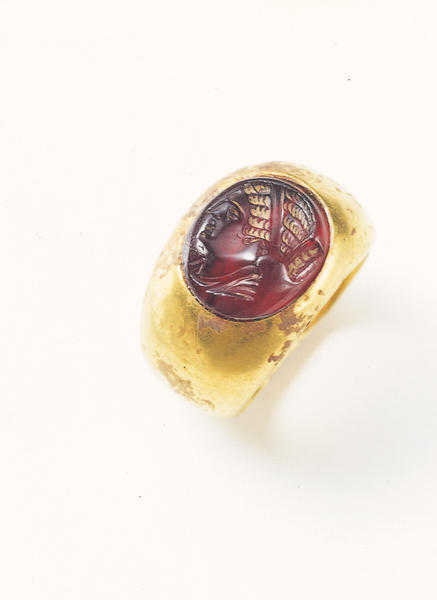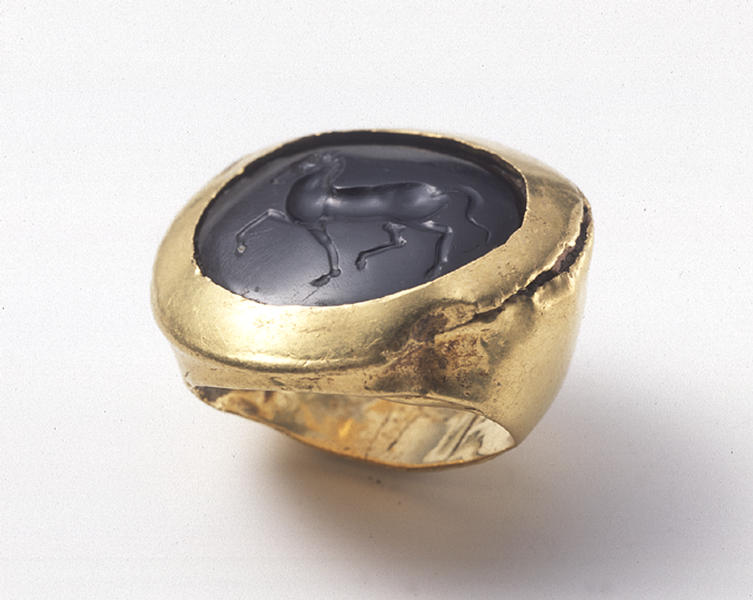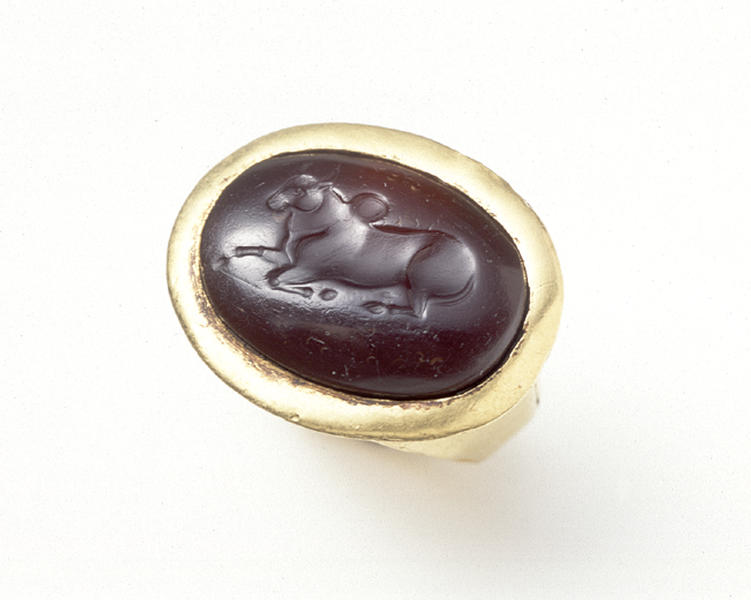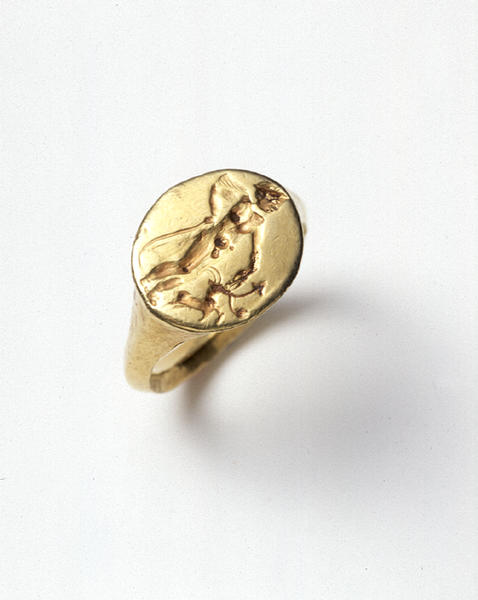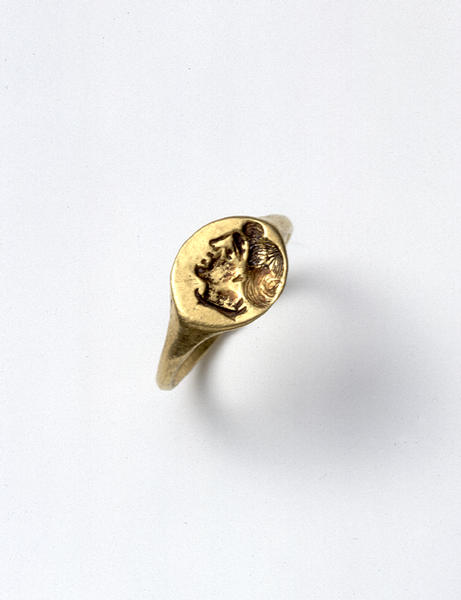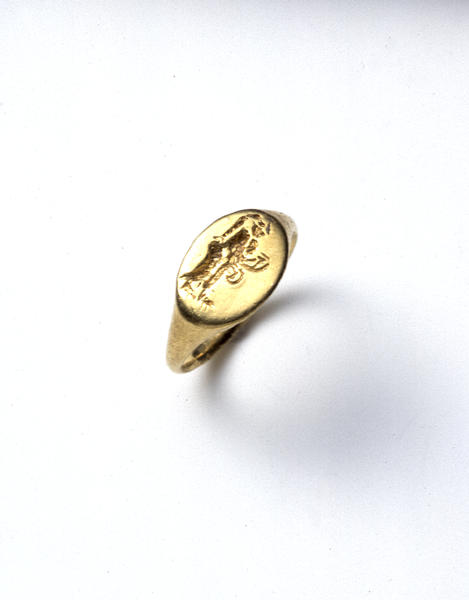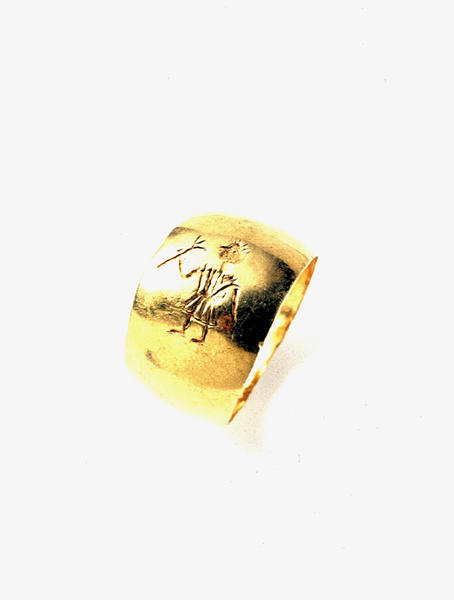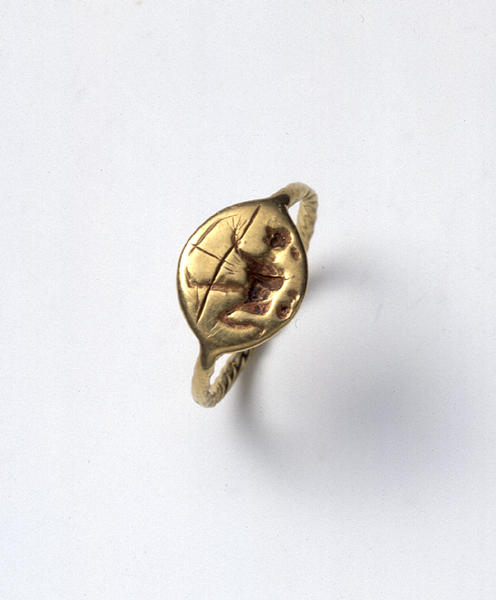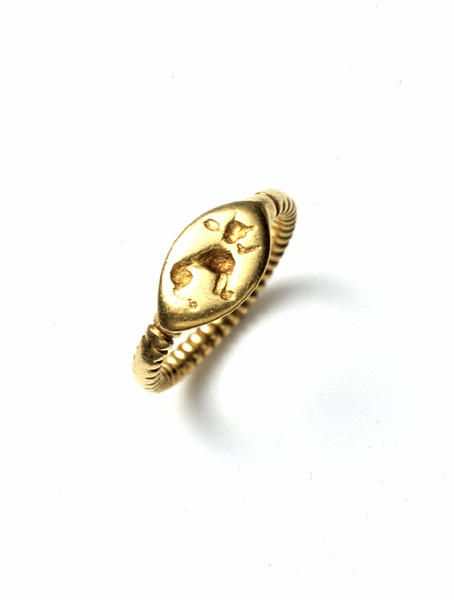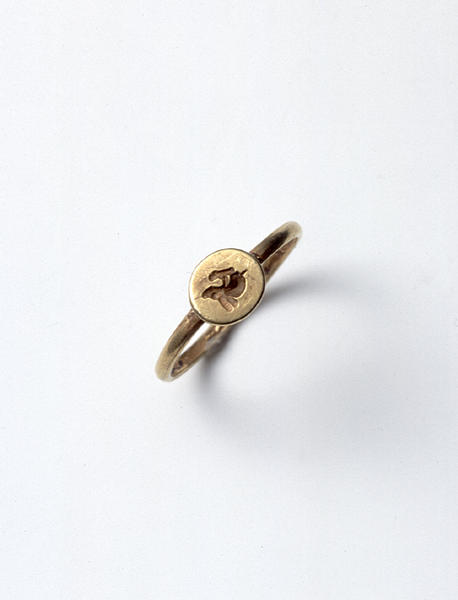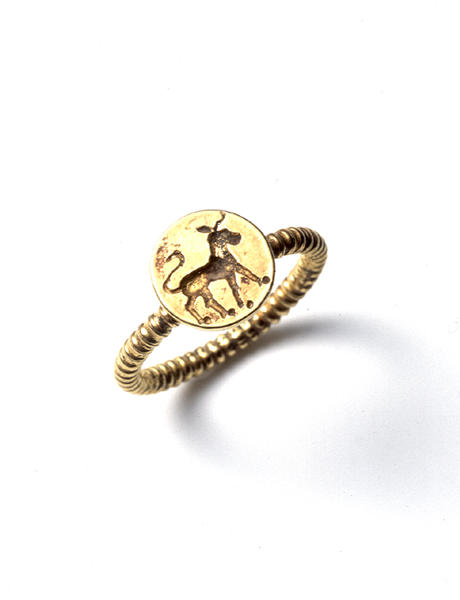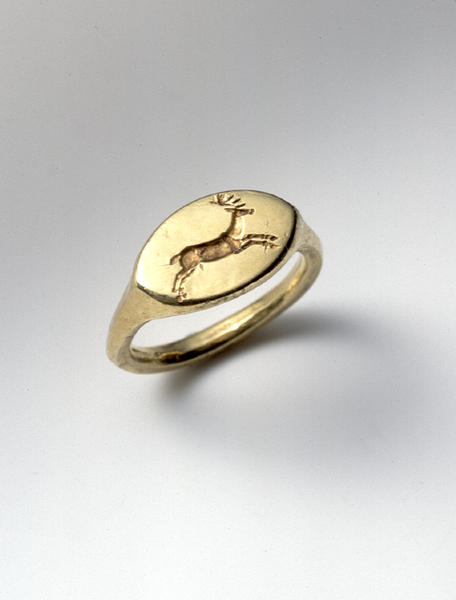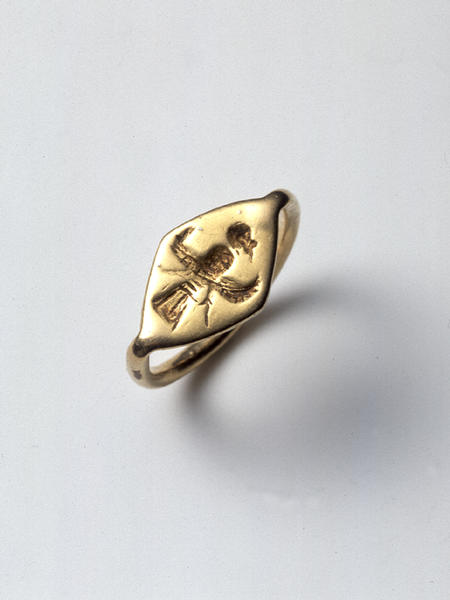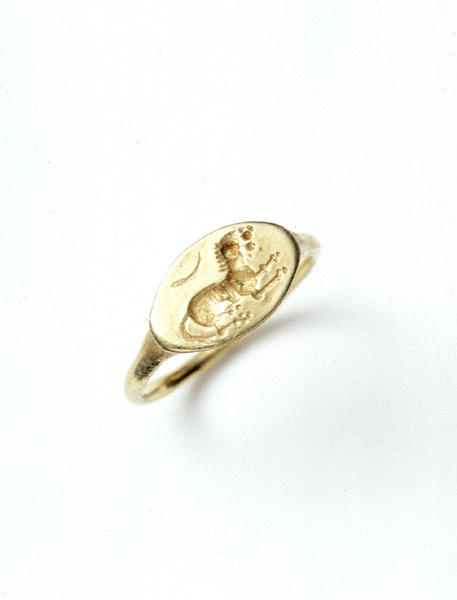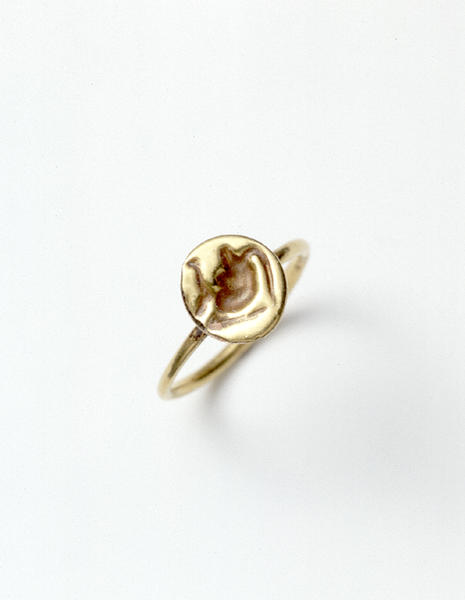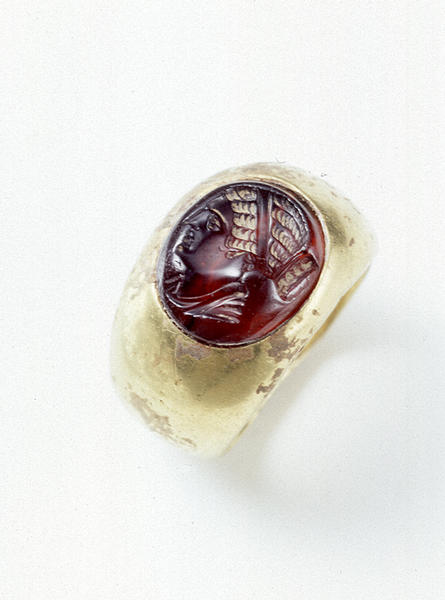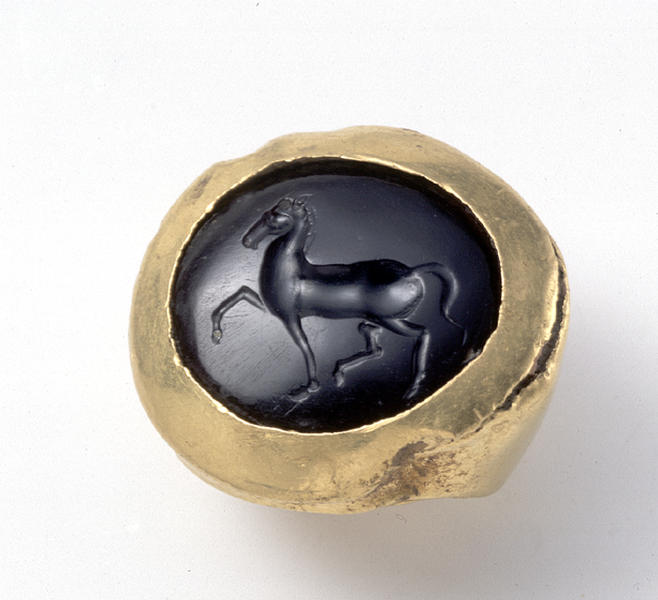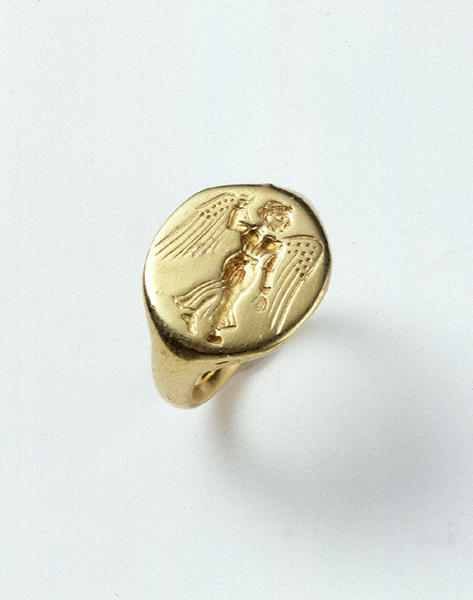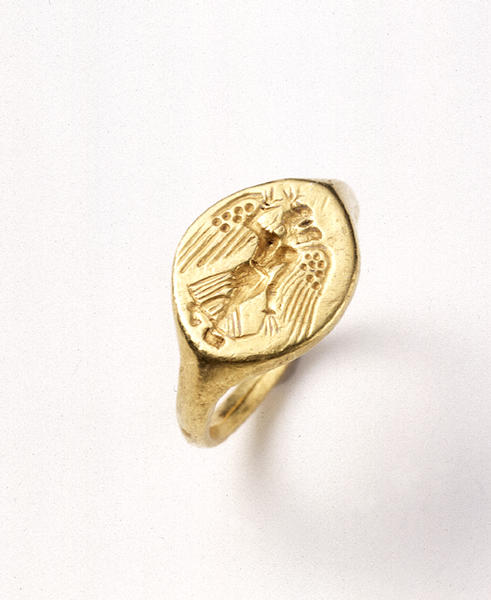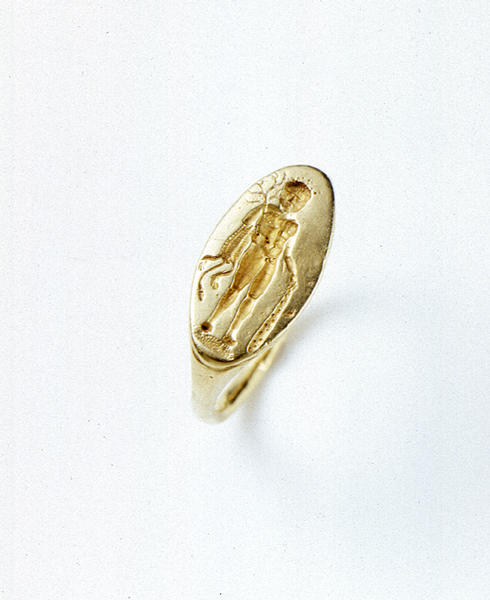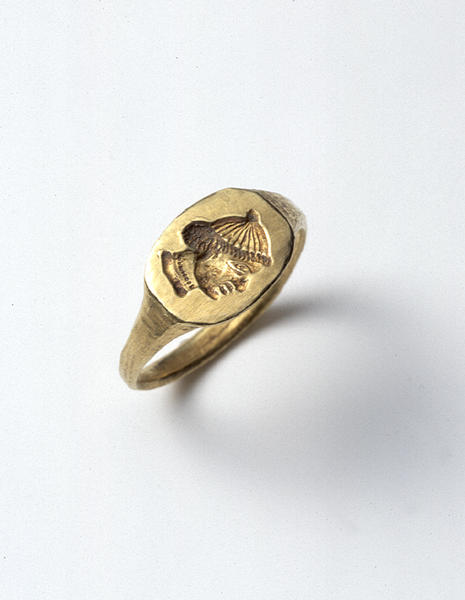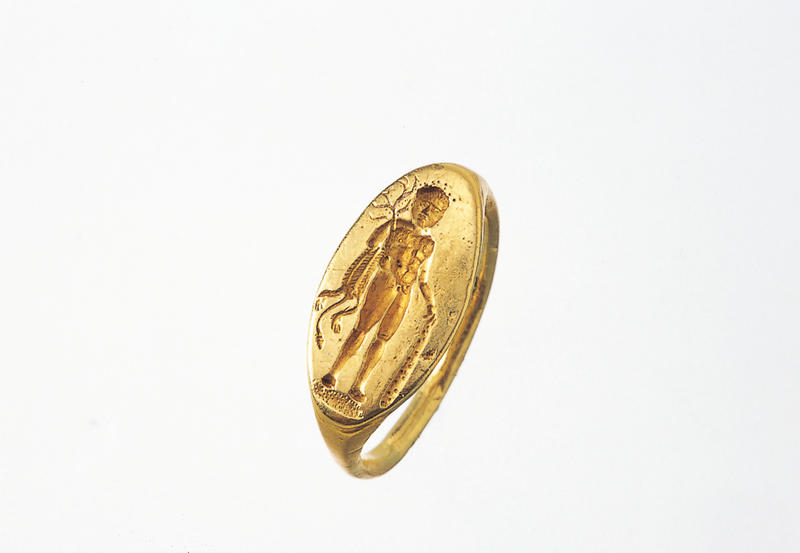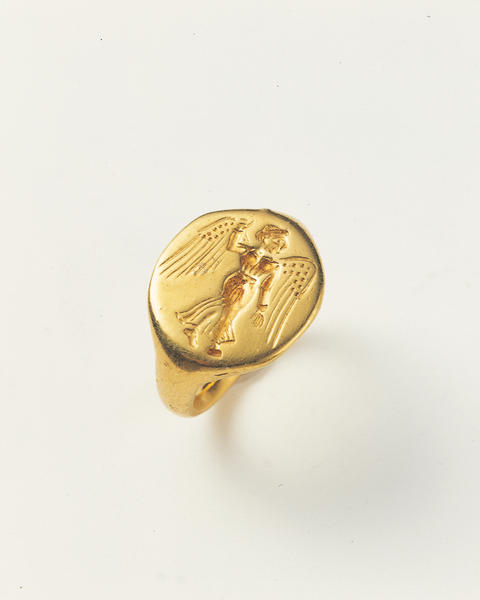Signet Rings
- 5th - 2nd century B.C.
- Gold, garnet, obsidian
Catalogue Entry
5th‐2nd century B.C.
Gold, garnet, obsidian
(a)H. 1.5 cm, W. 2.4 cm(b)H. 2.9 cm, W. 3.2 cm
cH. 2.4 cm, W. 2.9 cm(d)H. 1.5 cm, W. 2.1 cm
(e)H. 1.4 cm, W. 2.5 cm(f)H. 1.3 cm, W. 2.1 cm
(g)H. 1.0 cm, W. 2.0 cm(h)H. 0.9 cm, W. 1.7 cm
(i)H. 1.0 cm, W. 2.0 cm(j)H. 1.3 cm, W. 1.9 cm
(k)H. 0.8 cm, W. 1.5 cm(l)H. 1.0 cm, W. 2.0 cm
(m)H. 0.8 cm, W. 2.1 cm(n)H. 0.6 cm, W. 1.8 cm
(o)H. 1.1 cm, W. 2.3 cm(p)H. 1.0 cm, W. 2.2 cm
(q)H. 1.1 cm, W. 2.1 cmRH. 0.9 cm, W. 2.2 cm
(s)H. 1.0 cm, W. 2.0 cm
(a) A gold ring is inlaid with an oval garnet seal depicting a woman's head facing to the left, shown in intaglio carving. The woman wears a diadem on her head, indicating that she is from the royal family.
(b) A gold ring is inlaid with an oval obsidian seal carved in intaglio with a horse design, whose gait is that of pacer, shown facing to the left.
c A gold ring is inlaid with an oval piece of obsidian carved in intaglio with seated zebu facing left. The zebu has his right foreleg extended forward, and bulls and other cloven hoof animal images in this pose were a traditional design motif in Iran.
(d), (e) Gold rings have been fitted with oval surfaces which have been intaglio carved with a winged female figure walking to the right and with right hand raised. This is thought to be an image of the winged goddess of victory, Nike. Both figures wear sleeveless, seemingly translucent, belted chitons, and bracelets appear on both arms.
(f) A gold ring has been fitted with an oval surface carved in intaglio with an image of a nude, crowned, standing male facing to the right. His left hand is on a mountain goat. This is thought to be an image of the god Apollo.
(g) A gold ring has been fitted with an oval surface carved in intaglio with a nude standing male. His face looks out directly towards the viewer while his body is turned slightly to the right. The figure holds a club in his left hand and his right hand holds a lion skin and tree branch. This is thought to be an image of Hercules.
(h), (i) Gold rings have been fitted with oval surfaces which show intaglio rendering of a face in profile. Ring h shows a male figure facing to the left, while Ring I shows either a male or female facing to the right. The figure on Ring I has a headgear with a small ball on the top and wears a necklace.
(j) The surface of a gold band has been carved with a linear rendition of a man facing to the left and wearing a knee length sleeveless, belted chiton. His hair stands up, and his right arm has its elbow bent and is holding a branch with its end split into a trident form.
(k) The oval surface on a gold ring has been intaglio carved with an image of a woman facing to the right and holding a cup (or ointment jar) in her right hand.
(l) A gold ring has been twisted into a spiral shape and fitted with a spindle-shaped flat surface. An archer is shown on this surface, carved in intaglio and kneeling as he shoots an arrow.
(m), (o) Both rings are made of spiral-shaped twisted gold. Ring m has a spindle-shaped surface while Ring o has a round surface. Ring m shows an intaglio carved cat species animal with body facing to the right, while Ring o has an intaglio carved donkey facing to the right.
(n) A gold ring is fitted with a round surface which is intaglio carved with a rabbit facing to the right.
(p) A gold ring is fitted with a spindle-shaped surface which is intaglio carved with a deer running to the right. This is an extremely well-executed work and is thought to date from around the 5th century BC.
(q)-(s) Ring q is fitted with a lozenge-shaped surface, while Ring r is fitted with an oval surface. Each is intaglio carved with a bird of prey facing forward, a seated lion and a crescent moon. Ring s has a cup-shaped surface with an indecipherable image.
